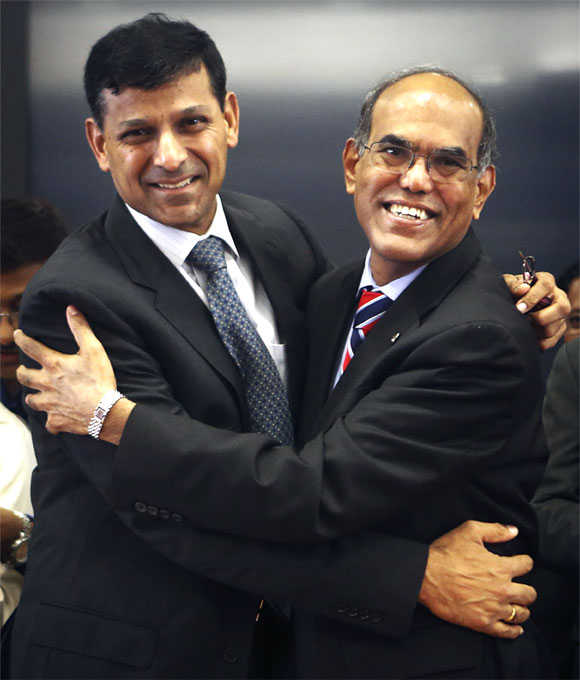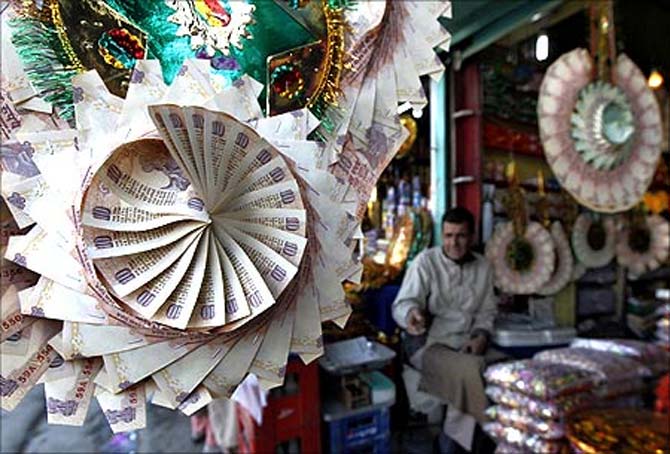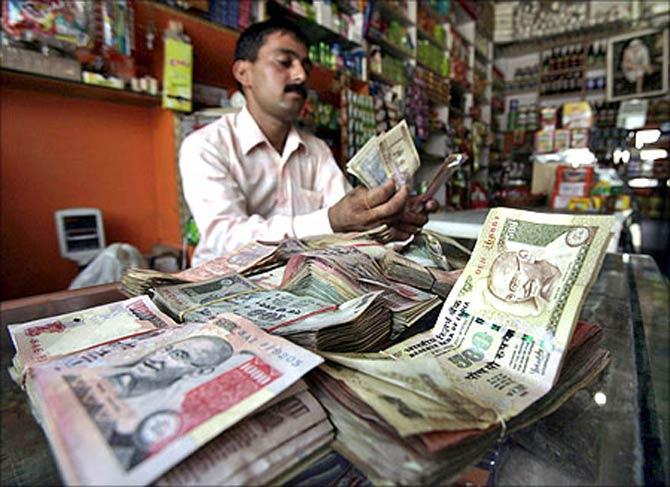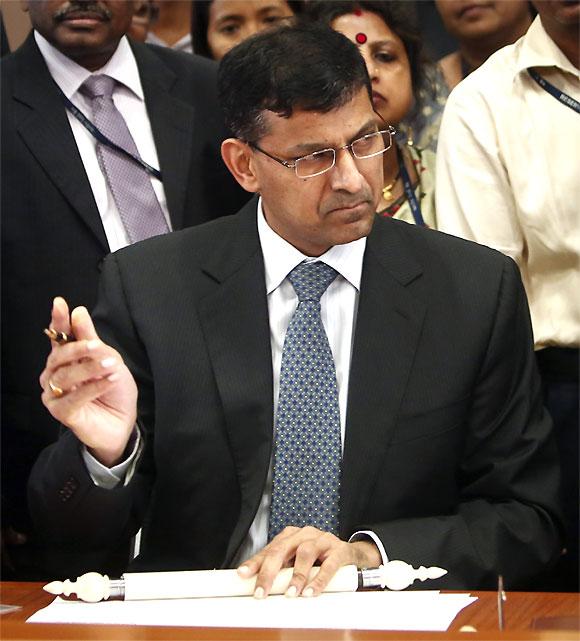Photographs: Danish Siddiqui/Reuters Andy Mukherjee
Rajan's call to diaspora can't stem rupee rout, says Andy Mukherjee.
Raghuram Rajan's first move as India's monetary czar has been to solemnise a marriage between a needy country and its greedy diaspora. That's the easy part.
Tackling the gruelling Indian stagflation will be the real test for the former International Monetary Fund chief economist.
Rajan, who presciently warned developed nations about a risky buildup of leverage in 2005, began his career as a central banker in Mumbai on September 4 by reaching out for the low-hanging fruit: the monetary authority, he said, will charge local lenders a fixed 3.5 per cent annual fee to convert new long-term dollar deposits from expat Indians into rupees.
...
Stagflation: Biggest challenge for Raghuram Rajan
Photographs: Reuters
In effect, the Reserve Bank of India is offering protection against further falls of the rupee at an attractive price. The currency's recent fall - 20 per cent against the US dollar since the end of April - reduces the risk for the central bank.
For Indian lenders, the all-in cost of raising dollar funds and converting them into rupee liabilities will be about nine per cent, what they are offering to resident depositors. Non-resident Indians can earn as much as 5.4 per cent annually on their surplus dollars, without any currency risk.
...
Stagflation: Biggest challenge for Raghuram Rajan
Photographs: Reuters
But the plan cannot work miracles. Morgan Stanley estimates it will draw in $5 billion to $10 billion of fresh deposits from overseas.
That might be enough to support the rupee for a little while, but it won't close the big foreign currency gap.
India's annual current account deficit is $70 billion and capital is flowing in the wrong direction. Foreign investors have pulled $3.7 billion out of Indian equities since June.
...
Stagflation: Biggest challenge for Raghuram Rajan
Image: Raghuram Rajan at the RBI Headquarters.Photographs: Danish Siddiqui/Reuters
The withdrawals are a response to crumbling GDP growth and near-double-digit consumer price inflation. The stagflation creates a dilemma for Rajan.
If he continues to defend the currency with high interest rates, then private demand growth - just 1.4 per cent in the second quarter - will collapse. But if he hastily reverses the three percentage point increase in short-term rates his predecessor engineered in July, the rupee might crash, causing inflation to surge.
Rajan's book about the 2008 financial crisis was called Fault Lines. For the next one, he might as well reserve Mumbai Mayhem.






article